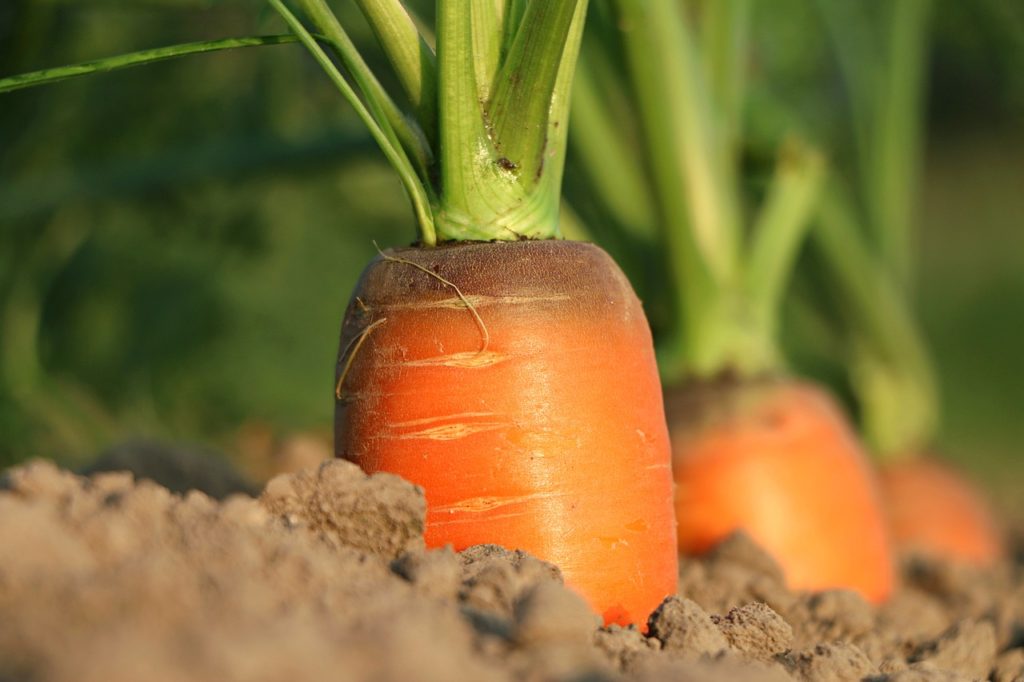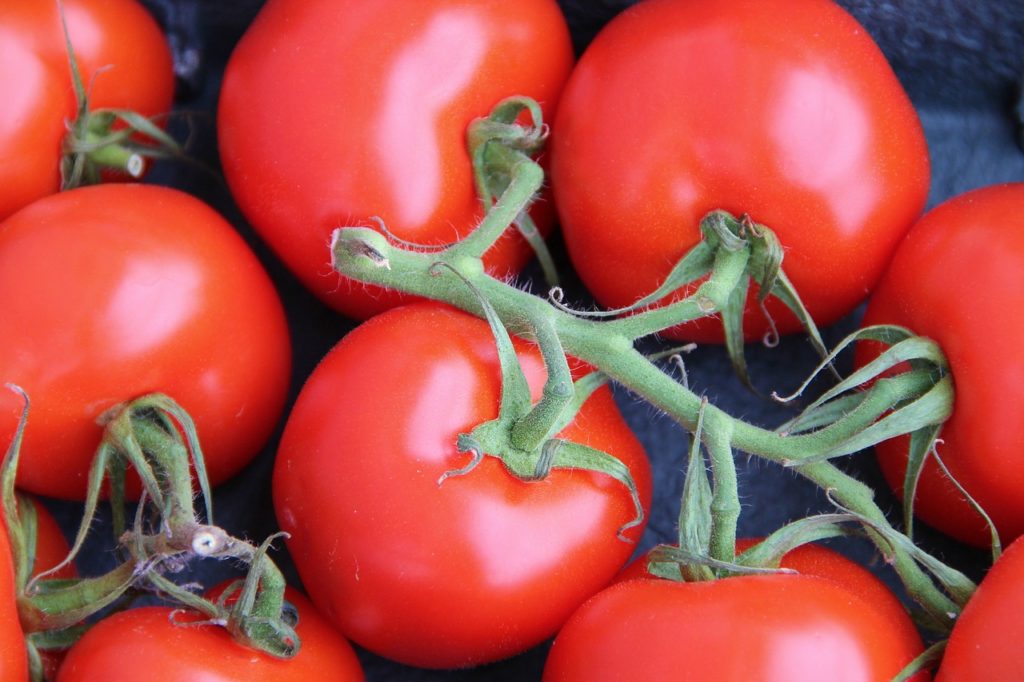Have you ever set up your garden or grown your own food before?
Tomatoes? Carrots? Potatoes? Lettuce? Green Onions? Radishes? Are you, like so many of us gardeners, preparing to plant your very own vegetable garden? How exciting! Good for you. The possibilities are endless. But first, one question:
If you have, then you know how much fun it is and have experienced the pure joy of it all. If you have never planted a vegetable garden before then you might be feeling anxious or unsure how to begin.
Growing your own food is extremely easy to do and also very rewarding. The thrill of watching it all grow right before your eyes, the feeling of giving food away to others, and the thought of saving money on your grocery bill are just a few of the many reasons why people choose to grow their own vegetable garden.
With careful planning and know-how, you can grow a successful, productive garden and produce an amazing harvest! And, 
Right now, you are probably considering important things like:
- What should I plant in my vegetable garden?
- How much watering or other maintenance will I have to do?
- Are there any pests that I should be aware of?
- Will my puppy dig up my whole garden? (Maybe that is just a question we had to ask!)
The answers to each of these questions above can be easy if you have the right tools and information.
In a hurry? Pin it for later!
In this post, part one of our two-part series on vegetable garden basics, you will learn 3 simple considerations to make as you prepare to plant your vegetable garden. For example: What is the difference between warm-season crops vs. cool-season crops? Should you plant seeds or vegetable starts? How should you arrange your garden and where should you set it up?
This information will be useful to all types of gardeners, whether beginner or novice.
In our next post, part two of our two-part series on vegetable garden basics, we will present the 9 fruits and vegetables to plant right now for a summer harvest using your new vegetable garden knowledge.
Alright, let’s dig in!
Are you listening to our podcast yet? Check it out!
(By the way, this post contains affiliate links. That means that if you click on any of the links we are promoting, we might get a small commission at no cost to you which helps us run our website and podcast).
3 Simple Things Gardeners Should Consider Before Planting A Vegetable Garden:
First, some important garden vocabulary. Call it a crash course.
Fruits and Vegetables Defined:
A Vegetable is defined as any plant part that is produced and consumed that doesn’t have any seeds in it. Examples would be:
- Lettuce

- Carrots
- Radishes
- Kale
- Spinach
- Corn.
A Fruit is defined as the part of the plant that is produced and consumed that does contain seeds in it. Some examples are:
- Cucumbers
- Tomatoes
- Peppers
- Squash (Zucchini, Butternut, etc)
- Pumpkin.
You would be amazed at how many people we talk to (or articles we read) who still consider tomatoes and cucumbers as vegetables. Rule of thumb: if it has seeds, it’s a fruit. No seeds, vegetable.
1) Cool-Season vs. Warm-Season Crops
Cool Season Crops
Cool-season fruits or vegetables are those that can still grow at average temperatures of 10° to 15°F (6° to 8°C). Planting these types of crops can take place in the late winter/early spring or in the late summer/early fall for a fall or winter harvest. These crops are perfect for those chillier nights because they can handle frost conditions.
In hot weather, these vegetables can become bitter tasting and will bolt, so try to schedule appropriately. This all depends on the individual crop, average weather conditions, and altitude of your area, of course.
Examples of cool-season crops are:
- Lettuce
- Kale
- Brussel Sprouts
- Cabbage
- Pumpkins
- Lettuce (if you plant from seed)
Warm Season Crops
Warm season crops are the summer crops. They require both warm temperatures and warm soil. Warm-season crops cannot tolerate any frost. Therefore, these crops should be planted after the last frost in your area, usually mid to late-spring. That means you can plant these crops now if you want a summer harvest.

Examples of warm-season crops are:
- Cucumbers
- Tomatoes
- Peppers
- Squash
- Corn
- Lettuce (if using starts)
Related Articles:
- Ep14: Garden Pollinators and Their Favorite Flowers
- Ep18: Vegetable Gardening: Part 1- What Is It and Why Do It?
- Top 5 Spring Garden Tasks You Should Start Right Now!
2) Seeds vs. Starts?
Every gardener’s dilemma: seeds or starts? For this series of vegetable garden posts, we decided to focus on “starts” instead of seeds. In case you are wondering, a “start” is a small plant you can purchase from your local nursery. Due to our space limitations and time constraints, the “starts” will speed up the time to harvest by weeks. Another reason to plant starts is there will be less die-off or seedling death, plus you will have an instant garden full of small plants to nurture and grow.
Sowing seeds can be a wonderful challenge and experience but it does take longer. We love to experiment with new seeds each season. In fact, we just planted Burpee seeds in our garden about a couple weeks ago. You’ve probably heard of Burpee or seen their products somewhere before because they are such a well-established, reliable seed company. We planted carrots, spinach, lettuce, cucumbers, tomatoes, and radishes. All of them have germinated and we are looking forward to a great harvest in the next couple months!
Related Articles:
- Garden Nursery Review: Watson’s Greenhouse
- How to Mulch: Basic Steps for Mulching Anytime of Year
- Top 7 Reasons Mulching Your Garden is Beneficial
3) Bed Type and Sun Exposure
Raised Beds vs. In-Ground Beds
A raised garden bed is useful for SO many reasons. It is elevated above the surrounding environment which offers protection from pests or various forms of wildlife, and your pets. Another bonus is that these beds are easier to reach for harvesting and maintenance.
A raised garden bed has specific soil with good drainage that is protected from compaction by foot traffic or machinery, and it also prevents weeds growing from the surrounding garden. It also helps delineate that area of your yard from other areas.
If you want to build on your own raised beds, they are easy to do it you have the right materials and know-how.
In-ground beds are basically the opposite of raised beds. They might not have all the same benefits as raised beds offer, but they are initially the easiest to set up and use right away. Other benefits are that you probably already have the soil and possibly irrigation in the area so less cost. If you want to create your own garden bed area, just clear the land (if necessary) and plant!
Currently, in our own yard, we are using both raised garden beds and in-ground beds. Overall, it comes down to your own preference, skill level, and budget.
Sun Exposure
You probably already know which vegetables and fruits you will be growing before you build and place your garden in your yard. Most of the popular fruits and vegetables are sun-loving for 6+ hours a day and require well-draining soil with ample water. This means you can pretty much get away with placing your new garden in a southerly facing location, whether its SE or SW. Your garden just needs to get 6+ hours of full sun and preferably afternoon sun for good harvests.
You can grow some fruits and vegetables that thrive in mostly shade but still need some sun. Possible examples are Arugula, Asparagus, Beets, Bok Choi, Broccoli, Brussel Sprouts, Cabbage, or Carrots.
Related Articles:
- How to Build Your Very First Raised Garden Bed In Time For Spring Planting!
- 5 Natural Pest Remedies For Your Garden
- How to Strategize and Manage Garden Pests Like a Pro
If you don’t have time to build your own raised beds, click below to order a great kit!
In Conclusion
With the above information and terms in mind, you can now start to plan your fruit and vegetable garden. Each of the three simple things discussed above should give you a great foundation to build from and ability to take your garden planning to the next level.
In part two we will present 9 fruits and vegetables you can plant right now for a summer harvest using your new vegetable garden knowledge. Oh, and how are you doing on your “spring garden boot camp challenge” to whip your garden into shape! Send us an email at SeanandAllison@SpokenGarden.com and give us an update!
After reading about the 3 simple things you can do before planting, what will help you in your garden? Comment below and let us know!
Thanks for reading and we hope we inspired you or educated you in some way. For more information about spring garden information, listen to our podcasts or check out our post about how to mulch so you can get your garden ready for a fantastic season ahead! Make sure to watch for next week’s blog post, part 2 of our Garden Basics Series.
If you enjoyed this post, can you help us out by sharing it? Follow us on Pinterest, Twitter, Facebook, and Instagram so you don’t miss a thing!
See you in the garden!
~ Sean and Allison




